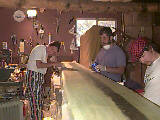
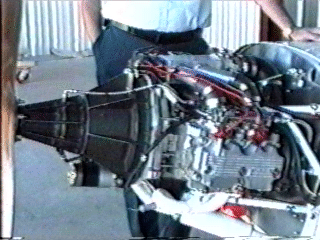
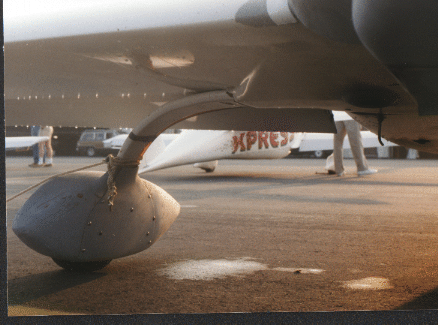
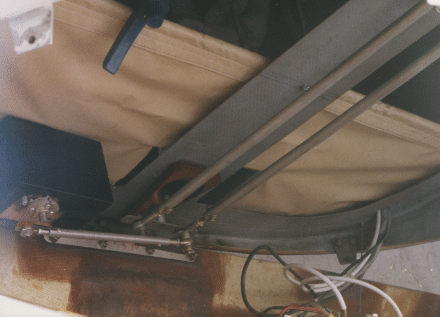
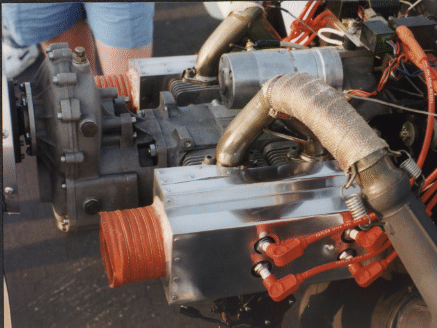
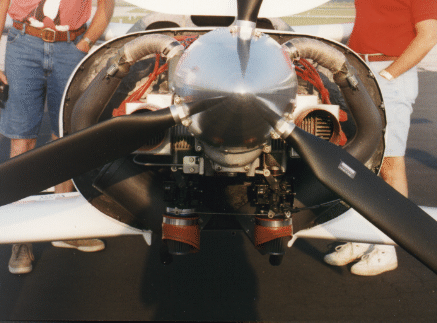
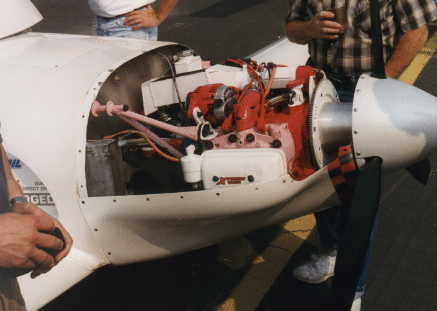
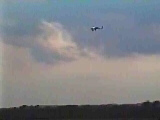 Click here to see why they call it the 'Sportscar of the Air': Dragonfly in a high speed pass, Ottawa fly-in, 1994 (760K AVI format - about 4 minutes at 28.8Kbaud)
Click here to see why they call it the 'Sportscar of the Air': Dragonfly in a high speed pass, Ottawa fly-in, 1994 (760K AVI format - about 4 minutes at 28.8Kbaud)
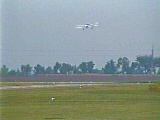 Watch a Dragonfly MK2 landing, Ottawa fly-in, 1994 (1.3Meg AVI format - about 7 minutes at 28.8Kbaud)
Watch a Dragonfly MK2 landing, Ottawa fly-in, 1994 (1.3Meg AVI format - about 7 minutes at 28.8Kbaud)
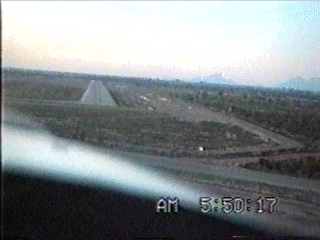 View from the Cockpit as Justin Mace does a Touch and Go in his Subaru Legacy powered Dragonfly. (2.2Meg AVI format - about 11 minutes at 28.8Kbaud)
View from the Cockpit as Justin Mace does a Touch and Go in his Subaru Legacy powered Dragonfly. (2.2Meg AVI format - about 11 minutes at 28.8Kbaud)
"The approaches are shallow. Unlike the brand X planes that have an elevator that can drive down the tail and change the angle of attack of the wing, the DF relies on the lift generated by the front wing. When you get slow over the numbers and want to flare there is no lift left to raise the front wing. PLOP, on you go. This has broken more Dragonflys than I care to think about. The standard brand X driver has to overcome the flare. It can only be done if you have plenty of speed and are fairly shallow. If you have a large rate of sink as in brand X then it takes gobs of power and full back stick to arrest the sink in the DF. Been there, done that. It's not fun.
I fly the down wind leg at about 120 mph. When abeam the numbers I pull the power to idle and maintain altitude to kill speed. At about a 45 degree angle off the numbers I turn base. All the while the sink rate is about 700 fpm. The turn to final is at about 90. Once you get the nose down to land, the speed will not come off. I am over the numbers at 90, and it hits the ground at about 85. Remember that all DF airspeed indicators are suspect until proven guilty. Almost all will be proven guilty, i.e. wrong. All the above is on a runway that is 7000 ft. long.
On a short runway the approach and landing is diffrent. I will let it slow down on downwind to about 90 then use a little power on final with the nose high to get into the drag bucket. You know behind the power curve. When you get there it takes a lot of power just to fly the DF. The landings can be made much slower and shorter, and still very shallow, however it takes a lot of practice to be able to do that type of landing." Justin Mace
 | Kevin Hester's photo album |
 | Justin Mace's Subaru Legacy Engine |
 | Ottawa 96 Fly-in - Hoop style gear |
 | Ottawa 96 Fly-in - Autopilot servo actuator |
 | Ottawa 96 Fly-in - John Spurling's Hirth engine in a Q200 (side view) |
 | Ottawa 96 Fly-in - John Spurling's Hirth engine in a Q200 (front view) |
 | Ottawa 96 Fly-in - Reg Clarke's Turbo Subaru EA-81 engine |
 E-mail
E-mail

